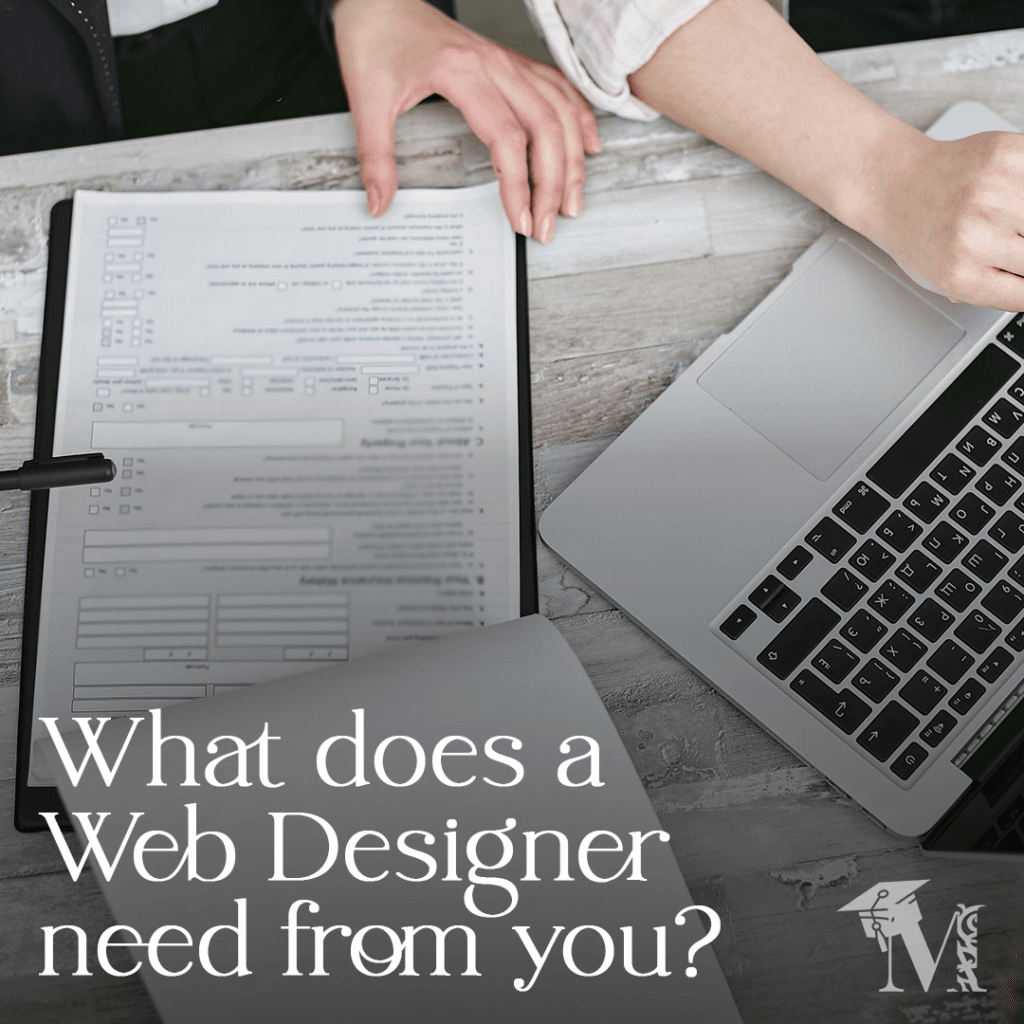Embarking on the journey of creating or revamping your website is thrilling! But let’s face it, hiring the right web designer or developer can be daunting. To help you navigate this process with confidence, we’ve crafted a guide on what you need to have ready before you dive into your search. Web designers need as much information from their clients as possible for several key reasons. With the right preparation, you’ll set yourself up for a seamless collaboration and a stunning final product!
Download our fillable checklist at the bottom + bonus form to fill out + bonus example form!
1. Clear Project Goals
Knowing the client’s objectives helps designers create a website that meets specific business needs. Information about the target audience informs design choices, ensuring the website resonates with the intended users and enhances user experience.
First you want to define what you want to achieve with your website. Are you looking to increase sales, improve user engagement, or simply establish an online presence? Having clear goals will help you communicate your vision to potential designers.
Questions to Consider:
– What is the primary purpose of the website?
– Who is your target audience?
– What actions do you want visitors to take?
2. Budget Range
Understanding your budget will guide your choices and help you find a designer or developer who fits within your financial parameters. Be honest about what you can afford, and remember that investing in quality can pay off in the long run.
Budgeting Tips:
– Consider not just initial costs but also ongoing maintenance.
– Do these costs include Domain Registration and Hosting? Will you own the full rights to your data?
– Determine if you want a one-time project or a long-term partnership.
3. Examples of Websites You Like
Gather examples of websites that resonate with your vision. This could include aspects like layout, colour schemes, functionality, and overall aesthetics. Visual references will provide a clearer picture of your expectations.
How to Curate Your Examples:
– Bookmark sites you admire.
– Make notes on specific features you’d like to incorporate.
4. Content Outline
Prepare a rough outline of the content you want on your website. Understanding the type and volume of content needed helps in structuring the site effectively and ensuring it’s organised and accessible. This includes text, images, videos, and any other multimedia. A solid content plan will help your designer understand how to structure the site effectively.
Key Content Components:
– Homepage
– About page
– Services or Shop
– Blog or news section
– Contact information
5. Brand Guidelines
Details about your brand/business, including values, voice, and visual identity, are crucial for creating a cohesive design that reflects the brand accurately.
If you have established brand guidelines, make sure to share these with your potential designer. This includes your logo, colour palette, fonts, and any specific imagery you want to incorporate. Consistency is key in maintaining brand identity.
Essential Brand Elements:
– Logo files
– Color codes (HEX/RGB)
– Font styles and sizes
– Any imagery or icons you use regularly
6. Desired Functionality
Think about the specific features you want on your website. Gathering specifics about desired features ensures the design meets all functional requirements. This could range from e-commerce capabilities to booking systems or custom forms. Be as detailed as possible about your needs to ensure the developer understands the technical requirements.
Common Functionality Requests:
– E-commerce capabilities (shopping cart, payment gateways)
– Blog functionality
– User accounts or memberships
– Contact forms or chat support
7. Timeline for Launch
Clear information about budget constraints and timelines helps designers plan the project efficiently and set realistic expectations. Having a timeline can help both you and the designer stay on track. Outline any important dates, such as product launches or marketing campaigns that depend on the website’s completion.
Timeline Considerations:
– Ideal launch date
– Key milestones in the development process
– Buffer time for revisions and testing
8. SEO Considerations
If search engine visibility is important to you, consider what SEO strategies you’d like to implement. Discuss your goals for organic traffic and ask potential designers about their approach to SEO best practices.
SEO Factors to Discuss:
– Keyword research
– On-page SEO strategies (meta tags, alt text)
– Mobile optimisation
– Site speed and performance optimisation
9. Maintenance Plans
After the launch, websites need ongoing care. Think about how much you want to manage on your own versus what you’d like the designer to handle. Discuss maintenance options and pricing with potential hires.
Maintenance Needs to Consider:
– Content updates
– Safe plugin updates
– Security checks
– Performance monitoring
– Regular backups
10. Communication Preferences
A thorough understanding of the client’s vision allows for more effective communication and reduces the likelihood of misaligned expectations, making feedback and revisions smoother. Establish how you want to communicate throughout the project. Clear communication is key to a successful collaboration. Decide on your preferred methods (email, phone, project management tools) and how often you’d like to check in.
Communication Tips:
– Set expectations for response times.
– Choose tools that both you and the designer are comfortable using.
Preparing these essentials will not only help you find the right web designer or developer but will also set the stage for a successful project. Being equipped with clear goals, a defined budget, and a vision for your website, you’ll ensure a smoother collaboration and, ultimately, a website that meets your needs and exceeds your expectations. By gathering comprehensive information, designers can create a tailored solution that not only looks great but also functions effectively for the client’s needs. Happy designing!
Download our fillable checklist below + form to fill out + example form!





